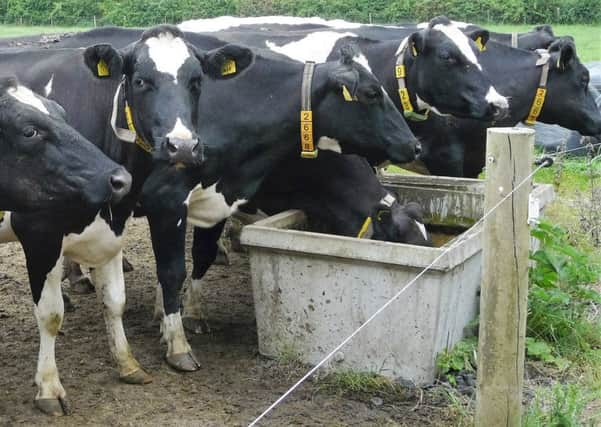DAERA Notes: Dairying


A ‘crash’ in milk yield is a concern when turning cows out to grass. So how can you maximise daily yield and remain feed efficient on your farm this spring when the yield of individual cows can vary from 15 to 60 litres?
In a spread calving pattern herd batching your cows into yield groups will help. Use milk yield to sort cows into groups for:
Grazing full time - lowest yielding/late lactation cows;
Grazing by day and housed at night - mid lactation cows;
Housed full time - freshly calved/highest yielding cows.
Advertisement
Hide AdAdvertisement
Hide AdFor the full time grazing group the ration M+ depends on grass supply and quality. For the partial grazing or full time housed groups formulate the ration M+ so that the lowest yielding cow in the group is not overfed. The M+ will change as cows are moved from housing, through partial grazing to full time grazing. Farmers with cows grazing for a few hours after morning milking, are topping them up in the parlour, after their first 10 litres of milk, at a rate of 0.45 kg of concentrate per litre. Once cows are settled on day time grazing, restrict parlour feeding to cows giving more than 15 litres. When full time grazing a cow yielding 40 litres per day requires 7.5 kg of concentrate. Cows yielding more than 40 litres should still have access to a blend in the TMR. Aim to have your grazing rotation fully established by the third week in April. Full time grazing will then provide the nutritional requirement for cows yielding up to 22-25 litres, but this depends on both weather and grazing conditions.
Drinking water
As a rule of thumb cows require five litres of water for every litre of milk produced. As about half of the herd’s daily water requirement is consumed after each milking it is important to provide adequate trough capacity and water flow rates. Have you noticed groups of cows waiting around the water drinkers? Any restriction in water supply will have an impact on milk yield. There should be enough trough space for 10% of the herd to drink at any one time and each drinking cow needs 700 mm of trough space. Position troughs within the grazing area to avoid yield restriction. The lip of the trough should be 850 mm above the ground and the water level 50-100 mm below the lip.
Nitrogen for silage
A splash-plate application of 33 cubic metres per hectare (3,000 gallons per acre) of cow slurry this February or March will have supplied enough phosphate and potash for first cut silage at typical silage field soil indices. It will also have provided some nitrogen for grass growth but there is still a major requirement for nitrogen fertiliser. Apply up to 100 kg of nitrogen per hectare (80 units per acre) now to fields for first cut.
April jobs checklist
* Prepare for the forthcoming breeding season. How good are your heat detection rates? Can these be improved? Have you selected suitable bulls to achieve your long term breeding goals?
* Assess condition of young stock, especially maiden heifers. Will they be in the right condition for service?
* Change your time clocks if not already done.